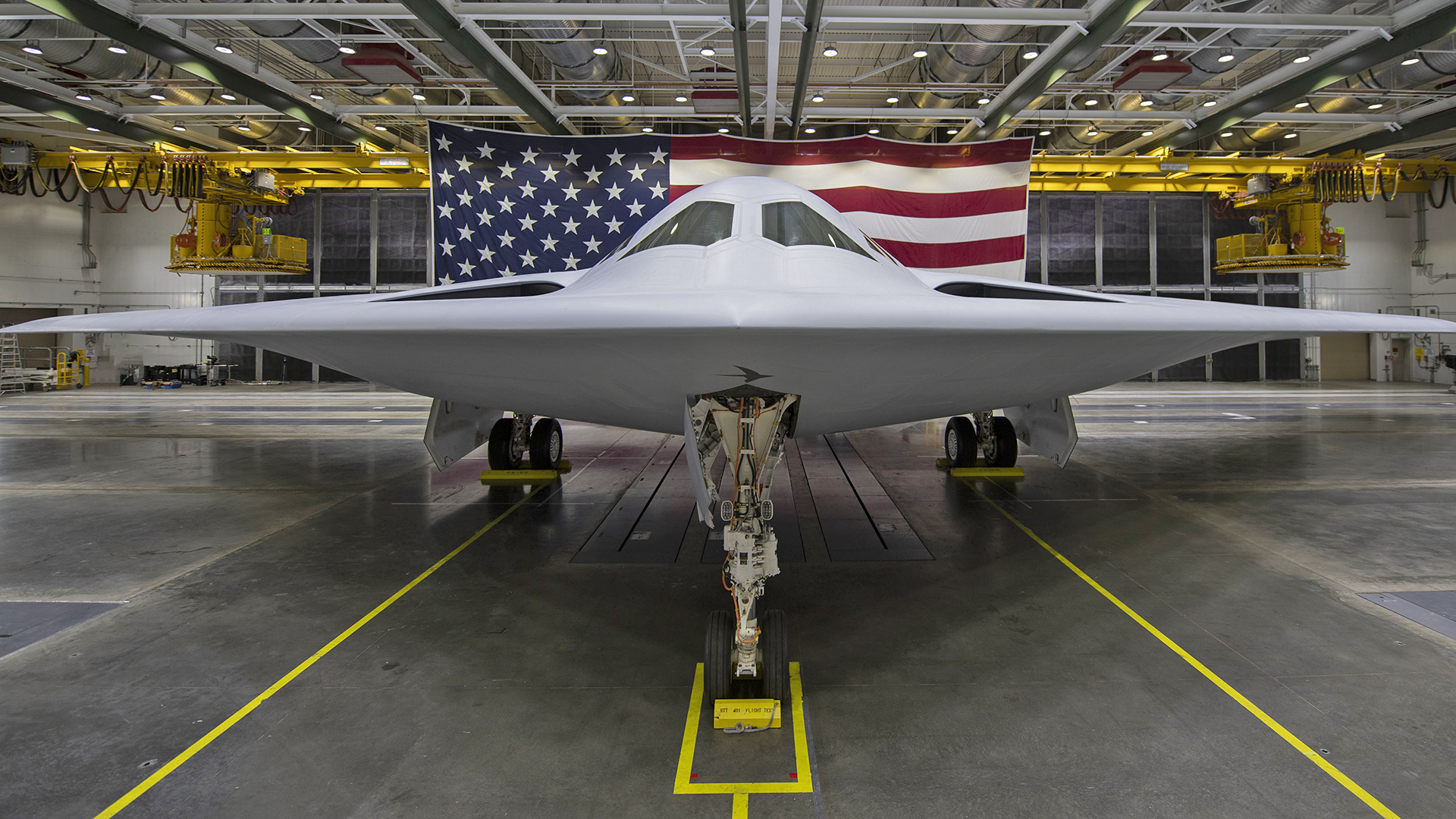In one of the most hotly anticipated military aviation reveals in history, Northrop Grumman, together with the U.S. Air Force, has finally lifted the veil from the B-21 Raider stealth bomber.
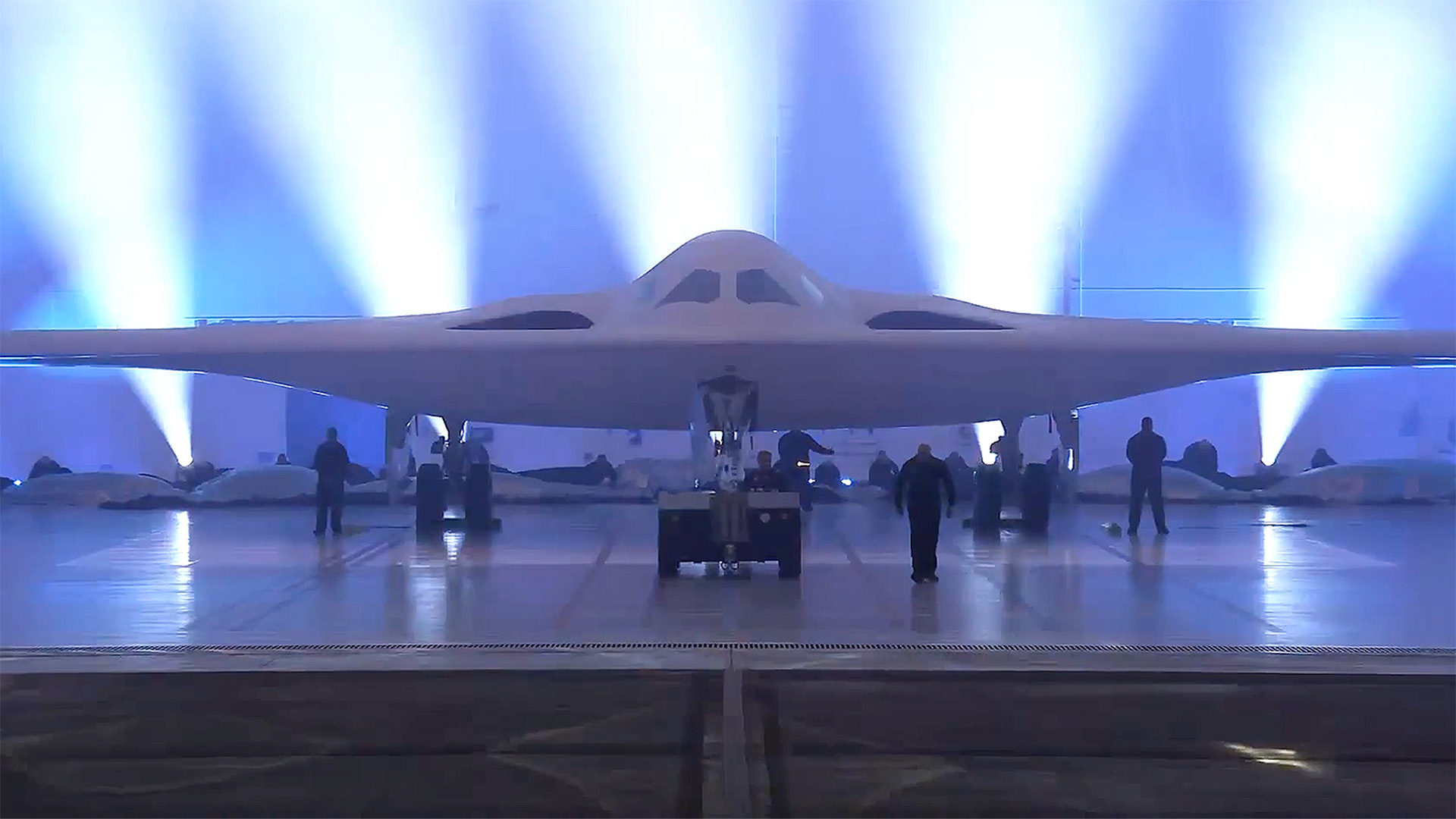
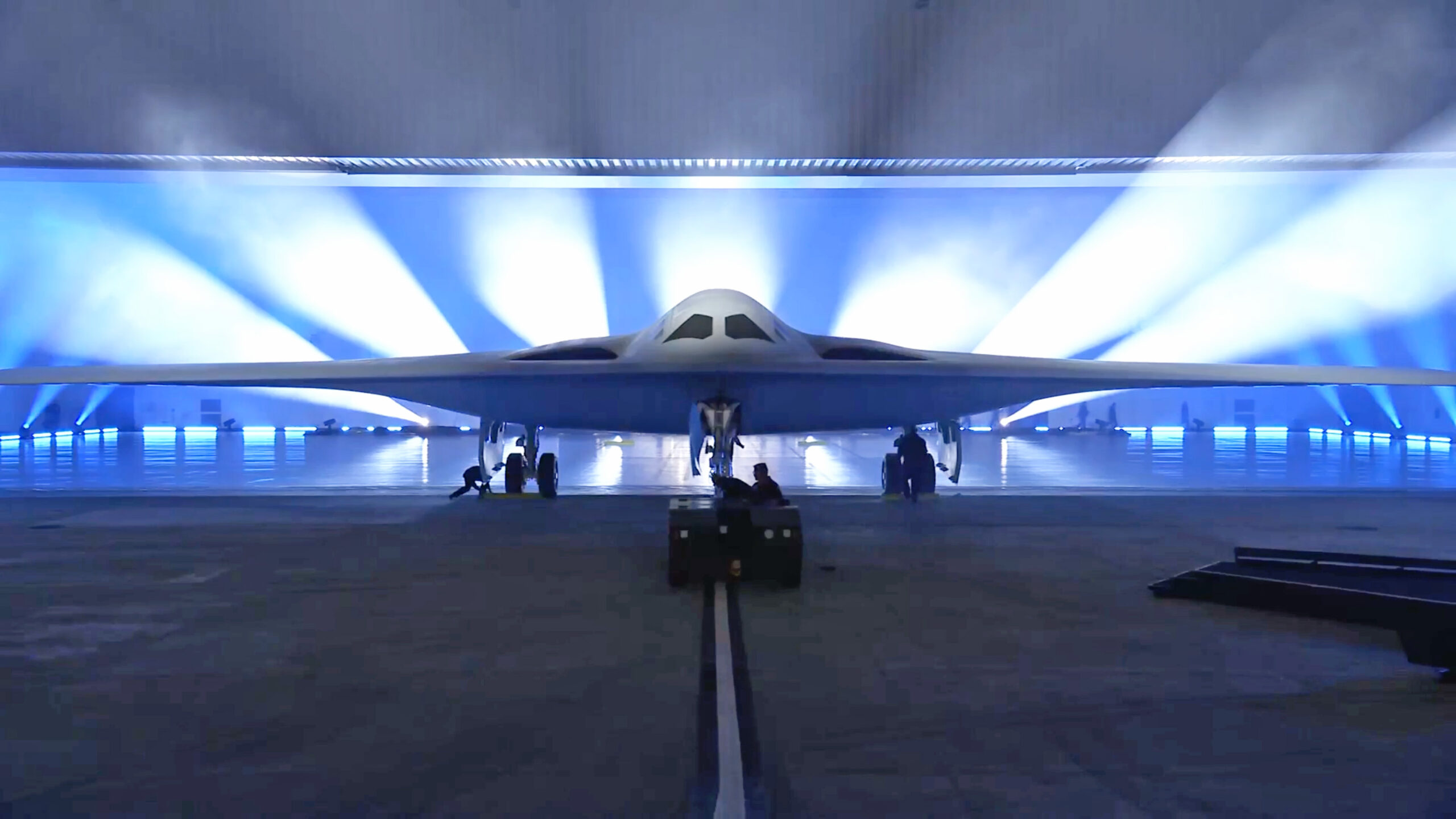
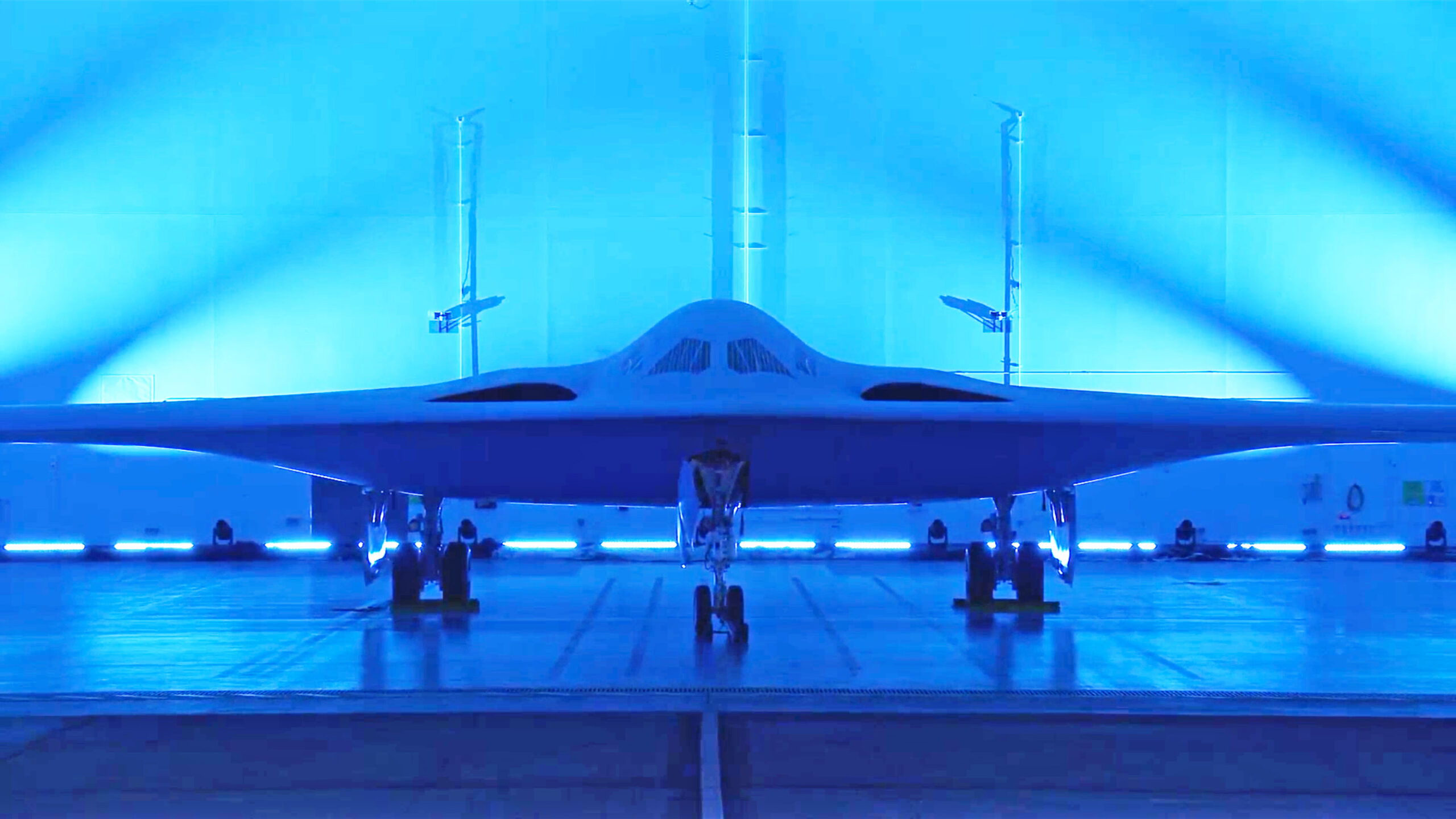
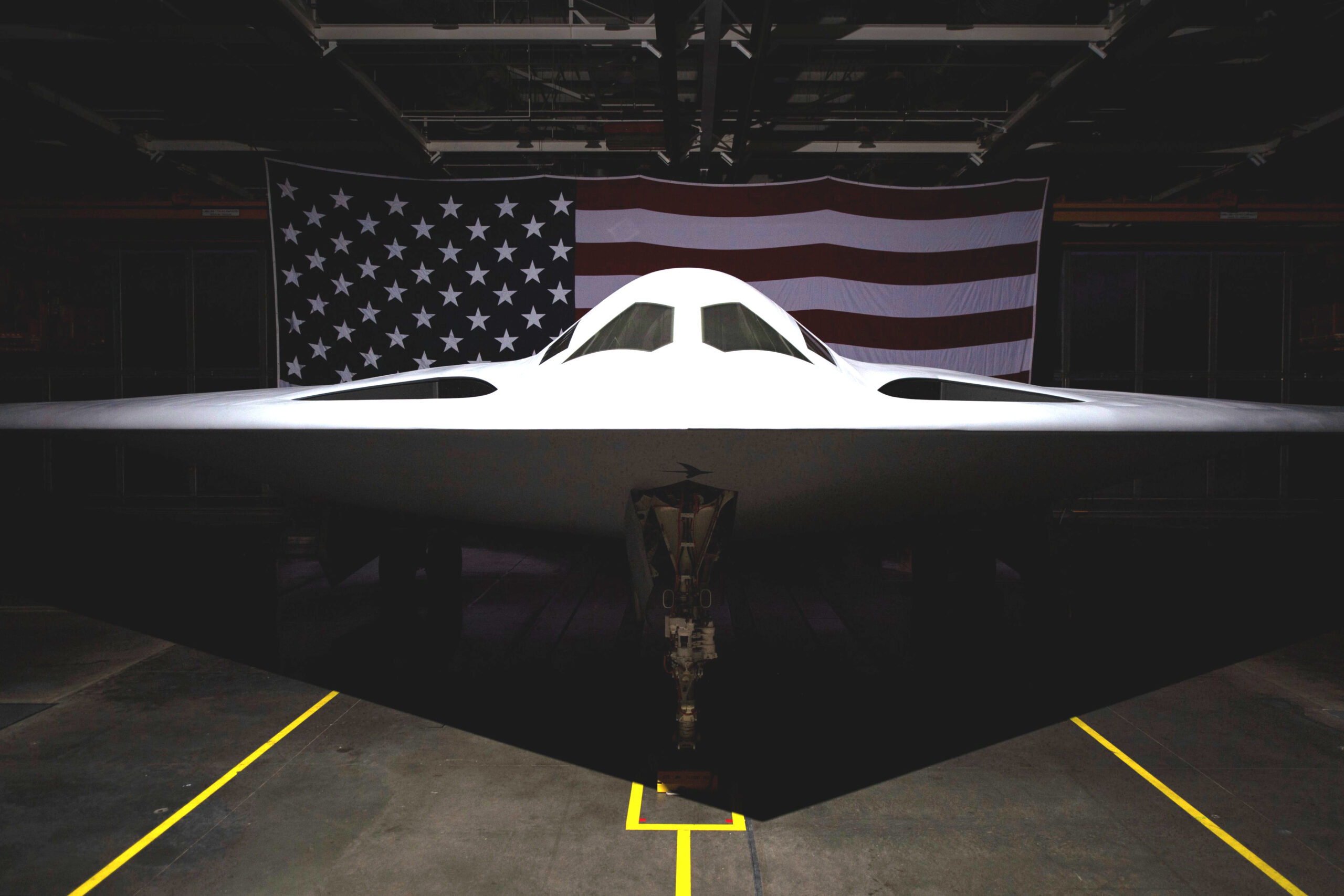
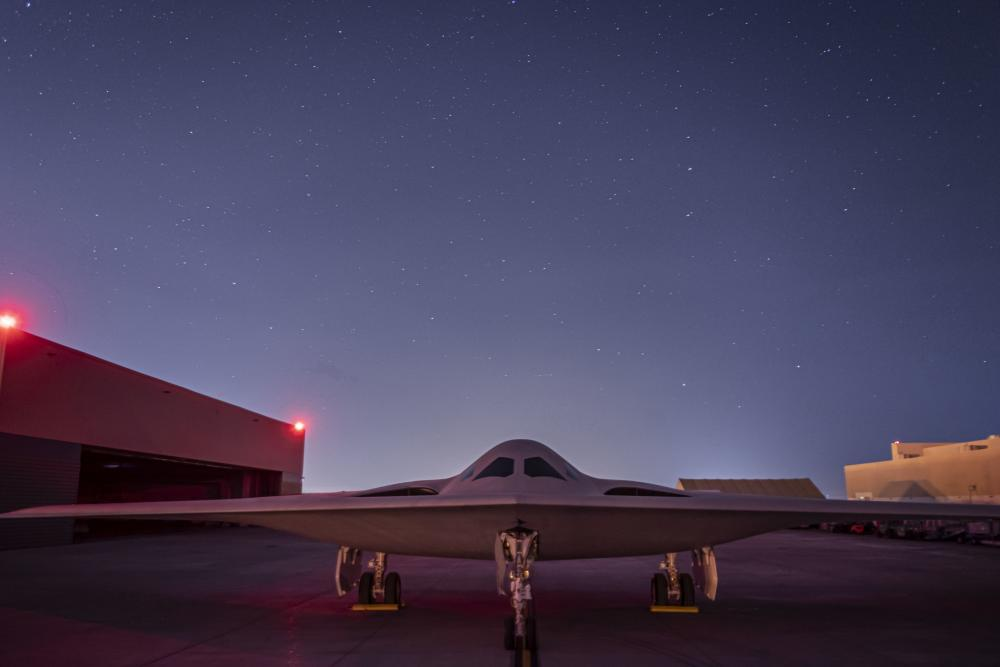
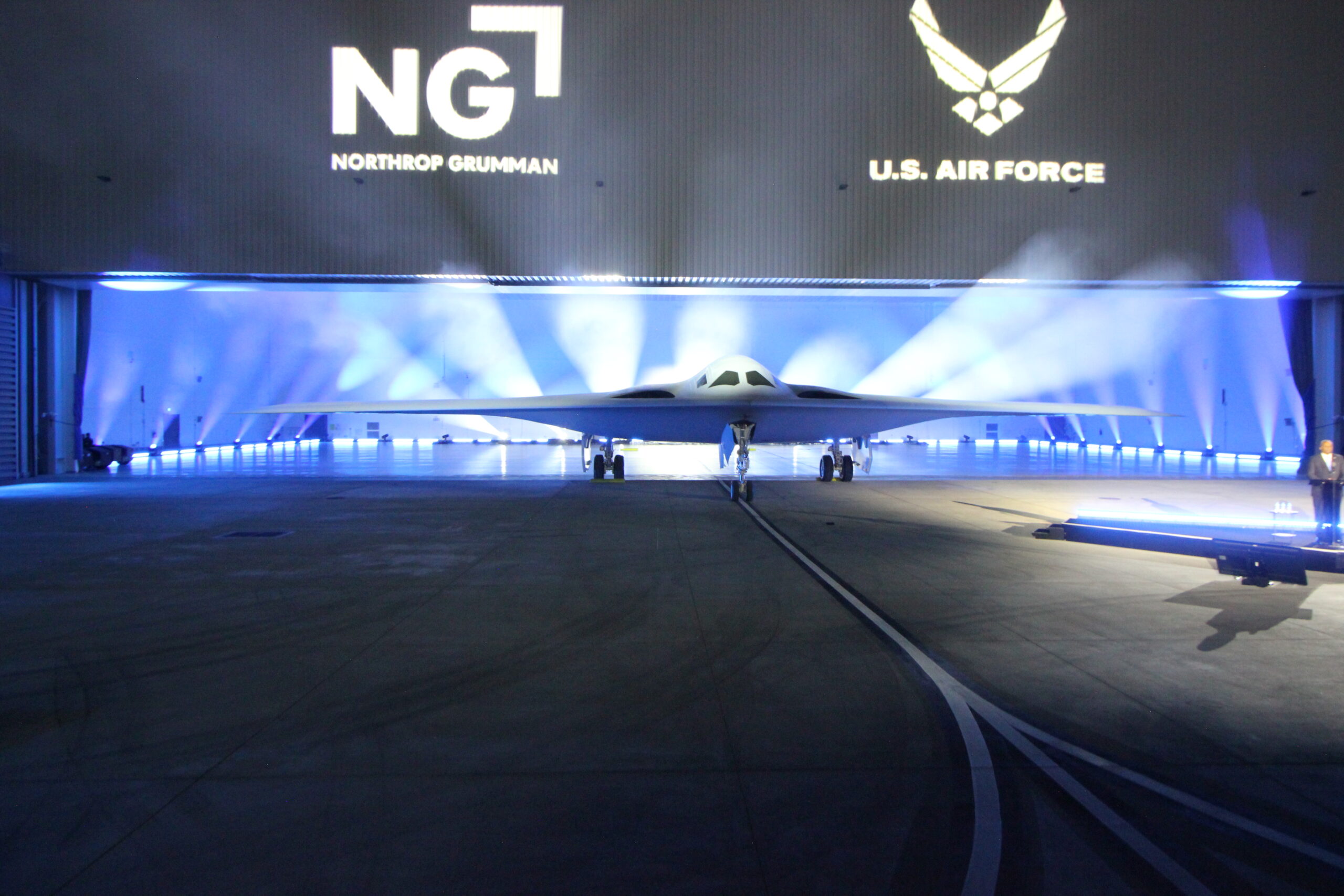
Journalists from The War Zone and other outlets were invited to actually attend today’s rollout in person, but it is being live-streamed for the general public after weeks of almost Super Bowl-esque buildup. Northrop Grumman actually teased the bomber in an ad broadcast during Super Bowl XLIX in 2015. The aircraft seen today, also referred to as T1 or aircraft number 001, is currently undergoing ground testing and is set to make its first flight sometime next year. There are five other B-21s known to be in various stages of production.
We will be updating this post very quickly with an analysis of what we are seeing and firsthand reporting from on the ground in Palmdale. We’ve also provided a section to help readers catch up on the state of the program before today’s event and to better understand what we know about the B-21 and what we don’t.
Preliminary Analysis:
- The B-21 is an imposing, futuristic-looking machine as expected. While its roots emanate directly from the B-2, it is hugely apparent, this aircraft takes low observables (LO; stealth technology) to another level. There is also a lot of past Northrop LO design influence seen here, including Tacit Blue, YF-23, and X-47B.
- The aircraft appears notably smaller than the B-2 when viewed as a whole head-on. This is not surprising, we knew it would be a smaller flying wing design and one that would sacrifice some weapons payload.
- A great indicator of this is its landing gear. It is a single truck design instead of the tandem dual truck design (two tires on each main gear instead of four) on the larger, heavier B-2.
- The aircraft’s nose wheel door is different from B-2’s in that it doesn’t feature a central, forward door, instead all associated doors open the side. Nor do they have serrated edges like the B-2’s.
- The windscreen that looked so puzzling in renderings is a bit more normal looking in reality. In fact, it is remarkably small with visibility very much optimized for viewing upward and forward. This makes sense for aerial refueling procedures. Beyond that, the visibility looks very poor out of the aircraft. The side small windows, which are curved as in the rendering, look as we originally posited, to likely be a low-observable compromise, with their shape minimizing the aspects that they can be seen by radar, especially from below. It will be interesting to learn more about how this feature came to be and just how far having no windows at all was pushed during the B-21’s design. There were serious discussions of the B-2 having no windows to maximize LO even back in the 1980s when issues with the windscreen and its inner tintable (for sudden nuclear blasts) removable pane were prevalent.
- The aircraft is indeed a very light gray color! This is critical. As we noted many times before, the B-21’s very low observable capabilities and its far broader, more eclectic mission set, would likely see it be put to use during the day. These colors point exactly to that. This may change as the aircraft matures, but at this time, it looks as if the era of locking stealth bomber operation into the dark of night will soon be over. You can see a thread I did on this just earlier today below.
- Broadband, very low observable design cues are abundantly visible. The entire aircraft, as much as we can see of it, is incredibly smoothly blended. Individual features and elevation changes are minimized totally. The inlets, which were a major challenge during the aircraft’s development process, are remarkable. They appear blended seamlessly deep into the flying-wing design, minimizing line-of-sight to them and the disruption to the aircraft’s flowing, almost shell-like very low-observable airframe. In close-ups, an internal duct support pillar or air splitter can be barely seen. Compared to the B-2, this is a revelation.
- No apertures for missionized sensors, air data sensors, or communications arrays can be seen anywhere. In fact, no heavy panel seams are seen at all. Some taped seams are seen around the cockpit windows and in a few other areas in close-up photos, but these are minimal really. New material sciences, construction, and design capabilities mean that very large composite components can be built and assembled, minimizing the number of airframe components and thus the need for many joints and seams. This is paired with major advances in LO coating and structures to drastically reduce the high maintenance costs and long downtimes associated with low observable aircraft. Fewer seams and panels to deal with would be part of this solution. Load bearing sensors, which are part of the airframe themselves, could (and likely area) part of the B-21’s revelatory design.
- There is no sharp ‘beak’ like on the B-2. Instead, this aircraft appears to have, as we have posited before, more of a ‘duckbill’ straight shelf along its leading edge to maximize LO qualities.
- We are only getting the frontal aspect here. There is so much more of the story to tell. We still don’t know exactly what the B-21’s planform really looks like, although it is very likely to resemble what we already know and it harkens back to the early B-2/ATB designs (read more about that and the B-21’s potential ability to fly higher here). The exhausts, arguably the most sensitive part of an LO design, are also a total mystery. Also, this is just the first airframe and we are likely to see additional changes, although minor in nature, to its features as it progresses towards its first flight. But Northrop Grumman has stressed heavily that this aircraft is groundbreakingly production representative, so just how much things could change is unknown. And we have no idea what systems, especially missionized ones, are even installed on this aircraft.
- The aircraft is clearly an extremely efficient design, which will lend itself to the great ranges it will have to fly. We also see here just how generous the internal volume of this design is, which will also lend itself to very long-range, as well. It also has to be able to carry at least one GBU-57/B Massive Ordnance Penetrator (MOP), or about half the payload of the B-2. Clearly, there is a lot of room in there to make that happen while also having a high fuel fraction. While we just see it in two dimensions, without depth, the two saucers welded together-like cross-section of the aircraft is very apparent in head-on viewing. While even significantly smaller than the B-2, it still looks imposing head-on. Side-on, I would imagine it would look very different, although without the B-2’s serrated tail, the length of the B-21 may be a bit more substantial proportionately speaking. It will still look bizarrely small side on, like its older sibling.
- This is just the beginning. We know so little about the science and creativity woven into this design. It will take years for an overall conceptual idea of much of it to emerge. Even today, many elements of the B-2 remain in the dark. Regardless, this is a very exciting first step.
This analysis is very preliminary, things will change, please consider it as such.
Update:
At the rollout, Secretary of Defense Lloyd Austin, as well as Northrop Grumman CEO Kathy Warden and Vice Chairman of the Joint Chiefs of Staff U.S. Navy Adm. Christopher Grady, offered additional insights and other comments about the B-21.
Secretary of Defense Austin:
- Touted the B-21’s range and fuel efficiency, stating that the bomber would not “need to be based in-theater” or need specific “logistical support to hold any target at risk.” He did not say whether this necessarily factored in mid-air refueling or additional range gained from employing stand-off weapons like the future Long Range Stand Off (LRSO) cruise missile. Still, it seems clear that the Raider has significant range capabilities with appreciable payloads, which could potentially point to advanced engine technology, a very efficient airframe, and a massive fuel load.
- Said that even the most advanced air defenses in service around the world would struggle to detect the B-21.
- Highlighted the B-21’s high degree of adaptability and said that it would “defend our country with new weapons that haven’t even been invented yet.”
- Specifically made mention of the Raider being “multi-functional” aircraft with significant intelligence, surveillance, and reconnaissance (ISR) and battle management capabilities.
- Highlighted the B-21’s built-in abilities to integrate with allies and partners.
- Paid tribute to Ashton Carter, who was Secretary of Defense when formal development of the B-21 began and who died unexpectedly of a heart attack in October.
- Also paid tribute to the World War II Doolittle Raiders, who conducted America’s first airstrikes on Japan in direct retaliation for the infamous attacks on Pearl Harbor, and which the B-21 Raider is named in honor of. An example of a B-25 Mitchell bomber, similar to the version of that aircraft employed on the Doolittle Raid, was among an array of other aircraft on display head of the rollout.
Northrop Grumman CEO Warden:
- Touted the B-21 as representing a new paradigm in design, development, and manufacturing thanks in large part to digital design techniques and tools.
- The Raider program, which currently has around 400 different suppliers in 40 states, also represented a new acquisition model as a result.
- Highlighted how the B-21’s design will allow for rapid technology insertions to keep pace with evolving threats.
- Warden said that the world has “never seen technology like the B-21.”
- She also said that the next time the public will see it, it will be in the air. It isn’t clear if this is hyperbole. Many ground tests will need to come before that occurs. While these may occur at night, it will be hard to keep this jet out of sight while doing those. Still, in an official capacity, the next major milestone is likely the first flight.
Vice Chairman of the Joint Chiefs of Staff Grady:
- Said the B-21 will ensure the US Air Force’s bomber fleet remains a premier airborne extended deterrent capability.
- Highlighted how the Raider will give American forces the ability to “penetrate and manipulate the battlefield to our advantage.”
- Made specific mention of the B-21’s ability to integrate with U.S. allied and partner forces in future operations.
- Said the B-21 will offer flexible deterrent and conventional strike options even in high-end contested environments.
- Describe the Raider as helping to ensure America will have the ability to “outmaneuver” and “outpace” adversaries and maintain its “decisive edge.”
Separately ahead of the formal rollout, a source with direct knowledge of the status B-21 program to date spoke with The War Zone and other reporters. The key statements and other details they offered are as follows:
- They described the B-21 as the most advanced stealth aircraft ever built.
- The B-21 was designed with decades of lessons learned from the B-2 and other programs to make the aircraft capable of providing very high-end stealth capabilities reliably and economically on a daily basis.
- The significant use of digital engineering techniques and tools allowed for rapid iterating of the design during the development process and allowed for more useful test work to be conducted before the aircraft ever flies.
- The use of digital engineering helped enable the first test article, which was rolled out today, to be very close in design to a production-representative aircraft, helping to reduce risk. You can read our article on this facet of the program here.
- The main role of the B-21 will be to provide strike capabilities that can penetrate through enemy air defenses at range.
- The B-21 is designed to embody lethality, sustainability, resiliency, survivability, agility, and responsivity.
- The B-21’s range and payload capabilities, in particular, coupled with its advanced stealthy design, are intended to offer significant advantages when it comes to penetrating or otherwise obviating enemy air defenses to successfully carry out high-volume strikes and return to base safely.
- The B-21’s actual performance specifications remain classified.
- The B-21’s advanced data-sharing capabilities are directly linked to its place as part of a planned family of systems and will enable it to act as ‘quarterback’ during operations.
- The B-21 makes significant use of modular, open-architecture systems that will help speed up the integration of new and improved capabilities, especially in response to new adversary threat developments, in the future.
- The hope is that modular, open-architecture mission systems will help ensure that the B-21 remains the most advanced stealth aircraft anywhere in the world for the next 30 to 50 years.
- The B-21’s current design does not preclude the integration of a pilot-optional capability if the Air Force continues with its original plan to pursue that capability.
- Advanced materials and new production processes give the B-21 a significantly higher degree of stealthiness compared to its immediate predecessor, the B-2, and make it easier to maintain.
- From an affordability perspective, they said that the B-21 program is meeting or exceeding all set “income requirements.”
- The B-21 program is also meeting all of its current schedule requirements.
- The aircraft’s first flight is still expected to take place in 2023, but the exact date will be dependent on how it progresses through initial testing on the ground.
- All workers on the B-21 program had to have specific Special Access Program security clearance.
B-21 Background
Prior to today’s rollout at Northrop Grumman’s facility at the Air Force’s Plant 42 in Palmdale, California is the first public look at any aspect of what has been a secret aircraft. Only a small number of digital renderings have been previously released since the first development contract for this bomber was awarded in 2015.
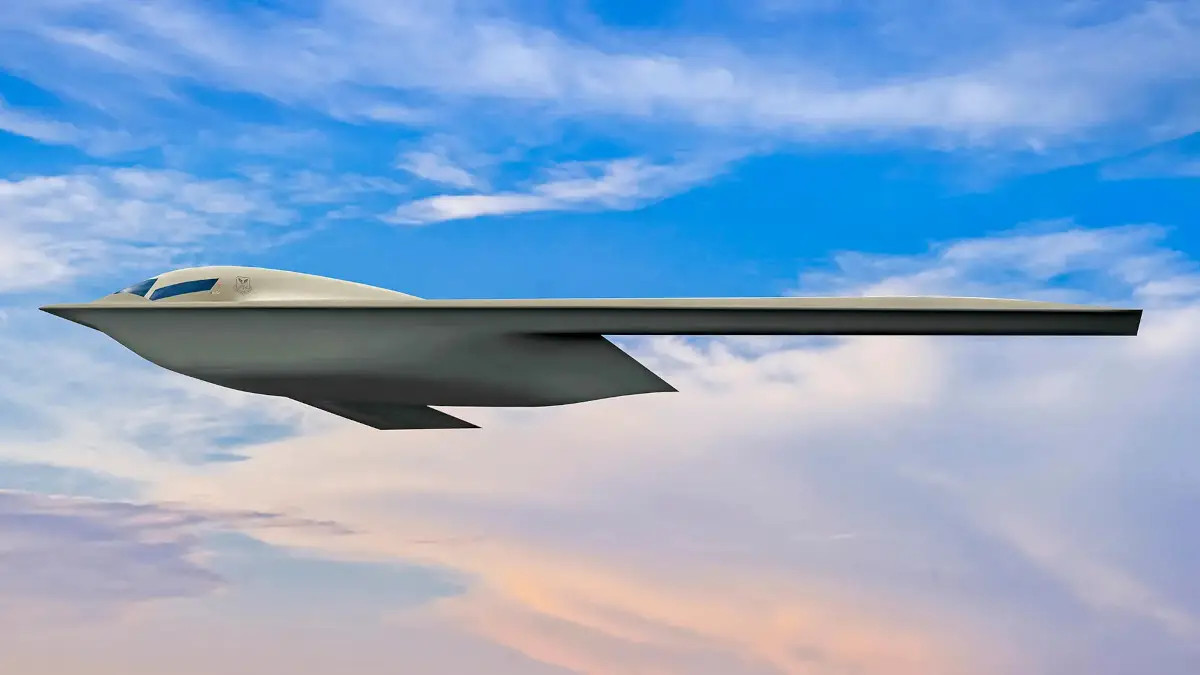
Those renderings have supported the long-established understanding that the B-21 would be smaller overall compared to its direct predecessor, Northrop Grumman’s B-2 Spirit stealth bomber, and The War Zone‘s analysis that it will be optimized for higher-altitude flight more in line with pre-B-2 Advanced Technology Bomber concepts. The most recent concept art had pointed to a curious cockpit windscreen configuration.
The B-21’s basic range and stealth capabilities are “significantly greater” than “the requirements that the Air Force had,” Northrop Grumman’s CEO Kathy Warden told Breaking Defense in an interview ahead of the rollout, but couldn’t provide any specifics. “The open systems architecture of the B-21… will make it easier to upgrade over time and [the] ways that we’ve manufactured the B-21 compared to the B-2 that will also make it far more sustainable in terms of the exterior and the hardware of the platform.”
Overall, Northrop Grumman has touted the B-21 as the world’s first true sixth-generation stealth aircraft, and, when it comes to its radar and other signatures, this will have a lot to do with the advanced nature of what lies below its radar absorbent skin as its external shaping. Maintainability and sustainability requirements were also top design drivers for the B-21. The skins and structures on stealthy aircraft like the B-2 have historically been extremely costly and complex to maintain, often contributing to low availability rates, the B-21 aims to break that paradigm.
When it comes to the aircraft’s full range of operational capabilities, there have been many questions, including whether it might have new, somewhat novel low-observable capabilities and the degree to which it will be pilot-optional at the time of delivery. The ability to operate in an uncrewed mode was among the key requirements the Air Force laid out for the Long Range Strike Bomber (LRS-B) program under which the Raider has been developed.
It has long appeared extremely likely that the B-21 is more of a multi-purpose platform than a pure bomber, and that it will feature significant electronic warfare, intelligence, surveillance, and reconnaissance (ISR), communications relay, and other capabilities. There have been discussions even about the possibility of the Raider having an air-to-air combat role, even in just a defensive manner. That it will play the role of a ‘quarterback’ for groups of networked drones with high degrees of autonomy has also been posited.
The aircraft’s many components, some of which are said the be mature are also a mystery. Porting various well-developed avionics over from other aircraft, like the F-35, has been speculated on in the past. Laser-based or other types of active anti-missile protection systems may be in the bomber’s future, at least somewhere down the line, regardless of its initial capability set. We know the airframe and its subsystems were designed to accommodate significant growth over what will likely be many decades of service. What we do know is that the B-21 will be a direct successor to the now 35-year-old B-2 Spirit, incorporating all the lessons learned and advances in technology since that aircraft was unveiled decades ago. In a way, Northrop Grumman has gotten the opportunity to build the B-2 ‘2.0’ of sorts, making the concept all that it could be.
Northrop Grumman said that the Raider was “developed with the next generation of stealth technology, advanced networking capabilities, and an open systems architecture” and “will deliver a new era of capability and flexibility through advanced integration of data, sensors, and weapons,” in a press release earlier this week. In separate interviews, Tom Jones, president of Northrop Grumman’s Aeronautics Systems unit, touted the bomber’s ability to support the U.S. military’s broader Joint All-Domain Command and Control (JADC2) vision, which is focused on the integration of advanced networking and associated capabilities into future operations.
The Air Force has also made clear that the B-21 is part of a family of Long Range Strike systems, the full extent of which has been shrouded in secrecy. It certainly included new weapons, such as the future nuclear-armed stealthy Long Range Stand Off (LRSO) cruise missile that the B-21 and B-52 will be able to carry, as well as sensors and other mission systems, and may even directly include work on other stealthy crewed and uncrewed aircraft. It isn’t clear how much these plans have changed in the years since its direct development began.
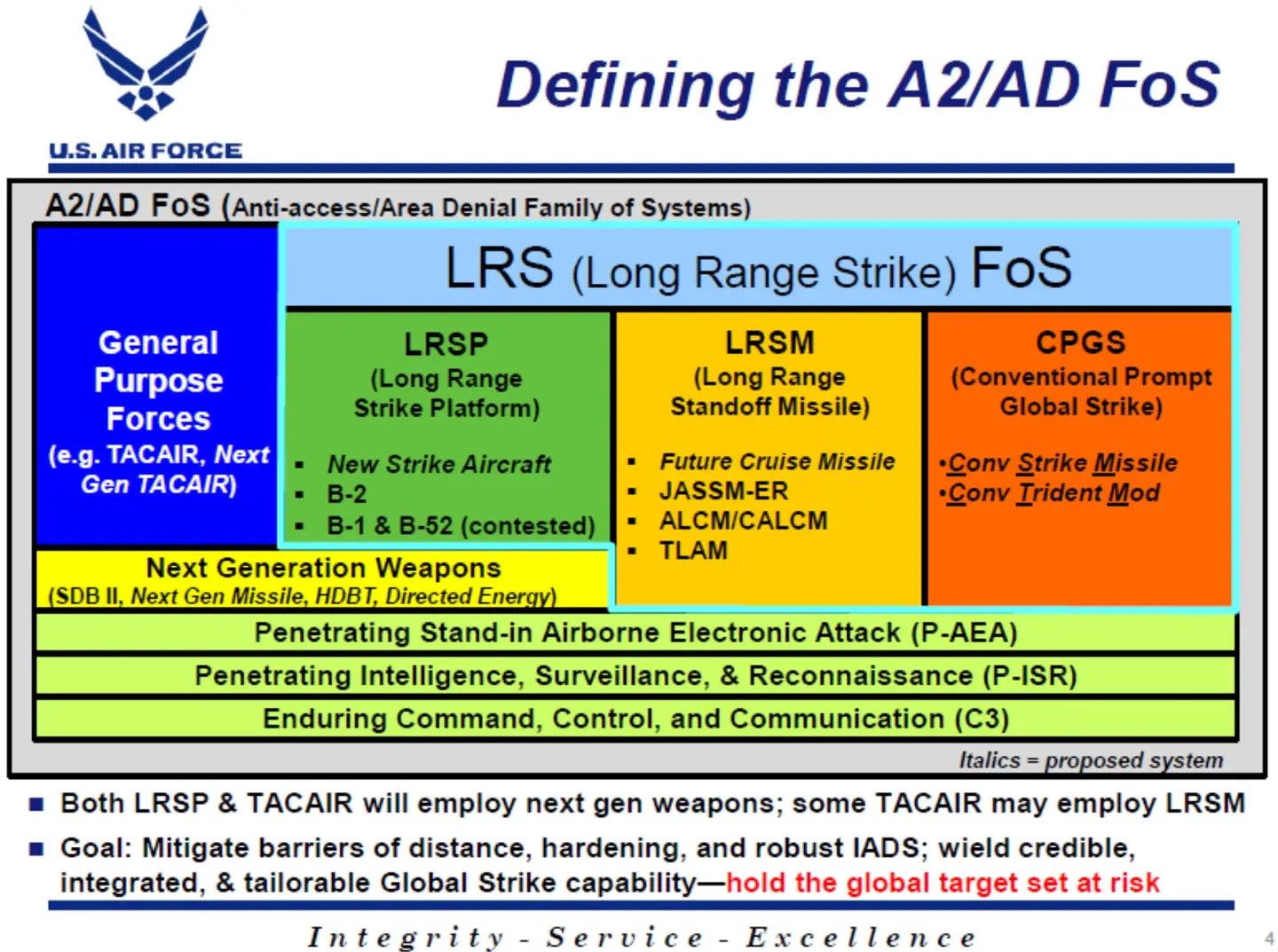
Regardless, the B-21 Raider is set to become a key component of America’s strategic bomber force, alongside re-engined and otherwise upgraded B-52 bombers, for decades to come, providing both nuclear deterrent and conventional strike capabilities. Air Force officials have made clear in the past that they see the Raider as being particularly essential to ensuring America’s deterrent capabilities in the face of China’s growing strategic arsenal. It is also a centerpiece of America’s conventional weapons strategy in countering China militarily over great distances in an anti-access/area-denial combat environment like what could be experienced in a future war in the Pacific.
The Air Force expects to ultimately replace all of its existing B-2 Spirit stealth bombers, as well as its swing-wing B-1s, with B-21s in the coming years. The service hopes to begin receiving operational Raiders in the mid-2020s, with the first squadron of these bombers to be based at Ellsworth Air Force Base in South Dakota. Additional units will follow at Whiteman Air Force Base in Missouri and Dyess Air Force Base in Texas.
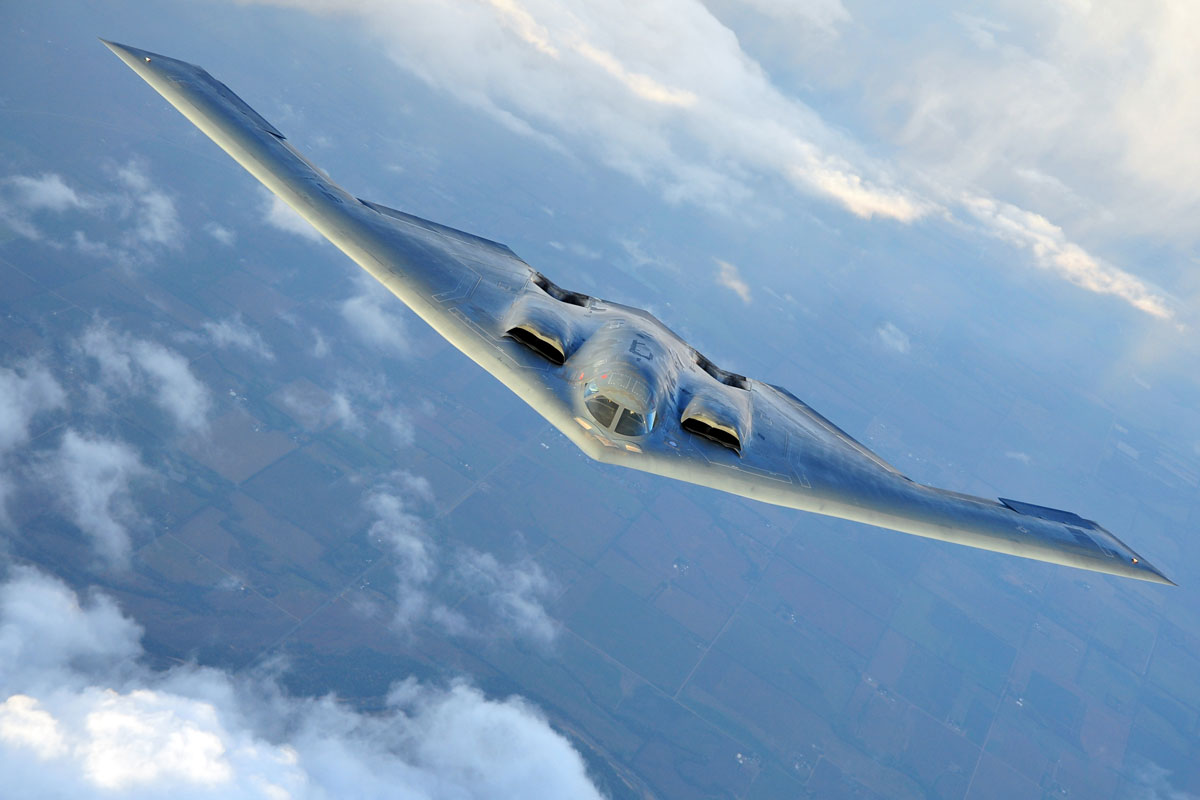
The total expected size of the B-21 fleet is unclear, as is how much each one, as well as the total program, may cost. The Air Force has said that the estimated average unit pricing, not factoring in research and development costs, currently remains under the $550 million target, which is in Fiscal Year 2010 dollars, that was set as part of the requirements for the LRS-B program, according to a report from Bloomberg earlier today. This means the current average expected unit cost for the B-21 should be no more than $692 million in Fiscal Year 2022 dollars.
The total estimated cost of the entire program is currently pegged at approximately $203 billion in Fiscal Year 2019 dollars, with “$25.1 billion for development, $64 billion for production, and $114 billion for 30 years of sustaining and operating a fleet of 100 bombers,” according to data the Air Force provided to Bloomberg. Adjusted for inflation, this total estimated cost is almost $240.4 billion in Fiscal Year 2022 dollars.
However, the Air Force has talked about the possibility of acquiring as many as 145 B-21s in the past, which would have significant impacts on both the total program cost and the average unit cost. Members of Congress, as well as Air Force officials, have repeatedly described the B-21 as a model acquisition program, despite technical hiccups and other apparent delays.
With all that being said, this is truly a historic day for the Air Force, Northrop Grumman, and aviation and military technology aficionados all over the globe. As noted earlier, we will be updating this post live with additional information and analysis.
Contact the author: joe@thedrive.com and tyler@thedrive.com
